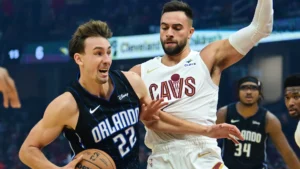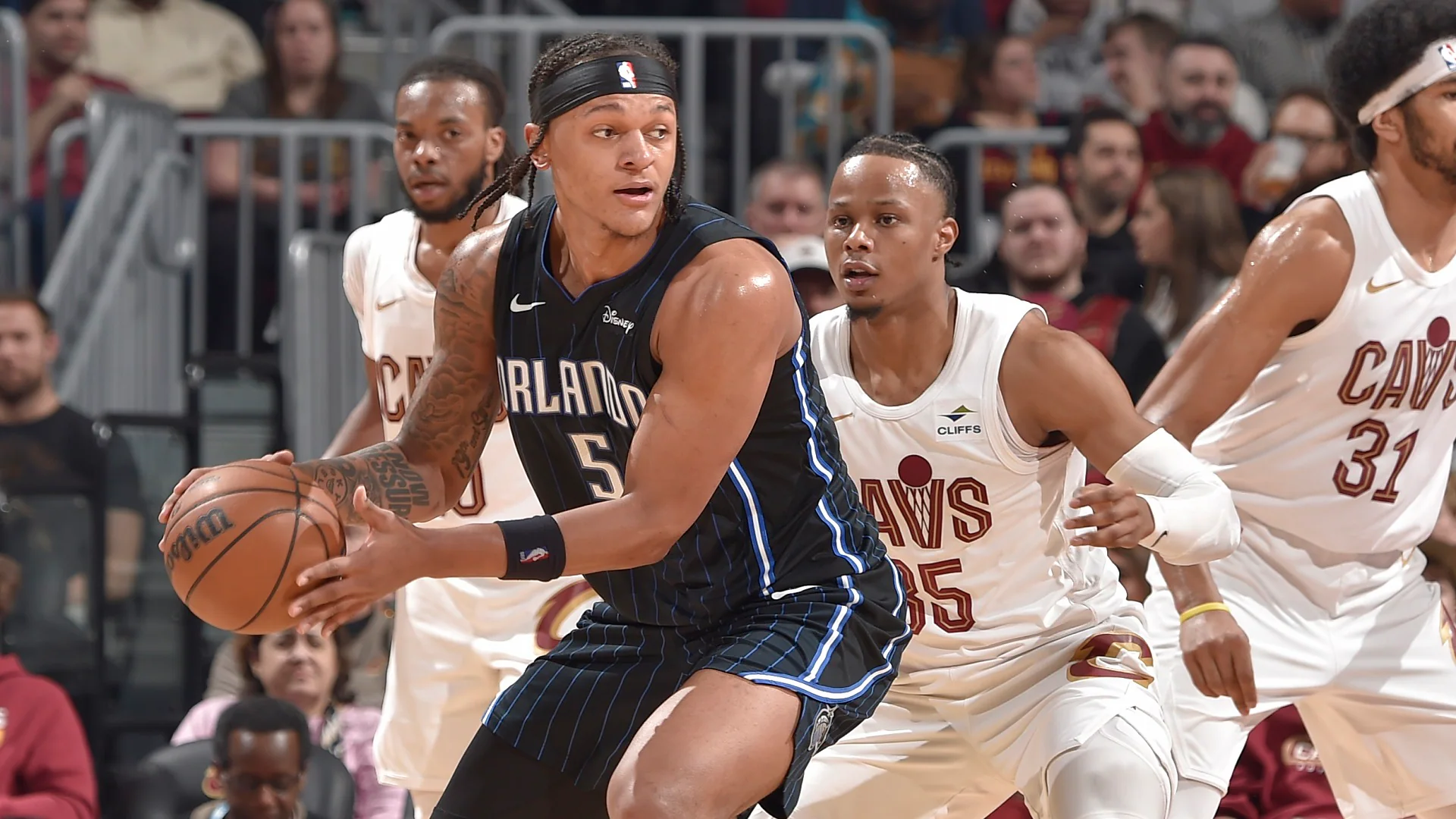Overview of the Match
The Orlando Magic faced off against the Cleveland Cavaliers in an anticipated matchup on November 10, 2023, at the Amway Center in Orlando, Florida. This game was significant for both teams, as they each sought to improve their standings within the league, showcasing their resilience and determination during the early part of the NBA season. The context preceding the match illustrated the competitive nature of both franchises, each looking to solidify their positions in the Eastern Conference.
Prior to this encounter, the Orlando Magic had been experiencing a mix of challenges and triumphs, demonstrating a budding chemistry among their roster. The team entered this game holding a record of 5 wins and 4 losses, showing potential but struggling to maintain consistency. The Cavaliers, on the other hand, had been performing notably well with a record of 6 wins and 3 losses, bolstered by a strong performance from their star players. Their recent form had positioned them favorably in the standings, highlighting the importance of this match as a potential turning point for the Magic.
Historically, the matchups between these two franchises have been closely contested, with each team vying for supremacy. The most recent encounter before this game saw the Cavaliers narrowly defeat the Magic by a slim margin, providing additional motivation for Orlando to seek redemption on their home court. Furthermore, injuries played a crucial role in shaping team dynamics, as the Magic had to manage the absence of key players, which added an element of unpredictability to the game’s outcome. As the teams prepared to take the floor, fans eagerly anticipated a thrilling contest, setting the stage for an analysis of individual player performances that would follow.
Key Players and Their Performance
In the recent matchup between the Orlando Magic and the Cleveland Cavaliers, several key players stood out, making significant contributions to their respective teams. For the Orlando Magic, the performance of their star guard was instrumental. He scored an impressive 28 points, complemented by 7 assists and 5 rebounds. His shooting prowess was evident, as he recorded a shooting percentage of 55% from the field, including 40% from beyond the arc, showcasing his ability to impact the game both inside and outside the three-point line.
Among the Cavaliers, a standout performance came from their forward, who delivered a powerful display with 25 points. In addition to his scoring, he contributed 10 rebounds and 4 assists, solidifying his presence on both ends of the court. His efficiency was equally notable, as he achieved a shooting percentage of 60%, proving vital in maintaining offensive pressure against the Magic’s defense.
Additionally, the performance of role players should not be overlooked. A Magic center recorded a double-double with 12 points and 11 rebounds, providing necessary support in the paint. Meanwhile, a Cavalier guard made unexpected contributions with 15 points off the bench, injecting energy and scoring depth that helped sustain the team’s momentum.
The influence of these individual efforts shaped the game’s dynamics significantly. The combination of high shooting percentages, effective rebounding, and crucial assists from these players not only led their teams to crucial scoring opportunities but also played a vital role in determining the match’s outcome. Overall, the performances of these key players were pivotal, marking the game as a notable contest in their respective seasons.

Comparative Player Stats Analysis
The recent matchup between the Orlando Magic and the Cleveland Cavaliers showcased a variety of player performances, contributing to the overall dynamics of the game. In examining the individual statistics, we can glean insights that reveal trends and highlight strengths and weaknesses of each roster. For instance, the Magic’s guard performance was pivotal, displaying a remarkable shooting percentage from beyond the arc. Specifically, the team recorded a collective three-point shooting percentage of approximately 40%, significantly outpacing the Cavaliers in this category. This statistic not only reflects the Magic’s effectiveness in perimeter shooting but also indicates the strategic offensive approach employed by the team throughout the match.
On the other hand, the Cavaliers showcased dominance in rebounding, with their frontcourt players securing a notable number of offensive and defensive boards. This advantage in rebounding could be attributed to the size and physicality of their forwards, which allowed them to control the tempo of the game and limit the Magic’s second-chance opportunities. In total, the Cavaliers amassed 45 rebounds compared to the Magic’s 35, demonstrating a clear statistical edge in this critical aspect of the game.
Moreover, when evaluating assist-to-turnover ratios, it was observed that players like the Magic’s point guard excelled, contributing significantly to their team’s ball movement. His ability to distribute the ball effectively while minimizing turnovers was vital in maintaining offensive flow. The Cavaliers, while effective in scoring, struggled with turnovers, which hindered their overall performance and allowed the Magic to capitalize on fast-break opportunities.
By juxtaposing these key statistics, it becomes evident that while the Magic had the upper hand in shooting efficiency, the Cavaliers excelled in rebounding and controlled the paint. This comparative analysis of player stats not only illustrates the strategic differences between the two teams but also emphasizes how such metrics can influence the outcome of a tightly contested game.
Post-Match Implications and Future Outlook
The matchup between the Orlando Magic and the Cleveland Cavaliers not only delivered an exciting contest but also set the stage for significant implications as the season progresses. Analyzing the individual player statistics reveals critical insights into both teams’ dynamics, which will likely influence their future strategies and overall morale.
For the Orlando Magic, standout performances from key players have the potential to bolster confidence as they proceed through the remainder of the season. High-scoring games, evidenced by the statistics from this matchup, can serve to elevate a player’s self-esteem and spur a stronger team environment. A focus on enhancing defensive strategies will be essential, particularly if specific players exhibited weaknesses during high-pressure situations. By reviewing these performances, the coaching staff can tailor future training sessions to address deficiencies and build upon strengths identified in the match.
On the other hand, the Cleveland Cavaliers will benefit from reflecting on their individual contributions to identify areas for improvement. Players who may have underperformed will need to examine their techniques and approach in high-stakes games. Building a game plan that maximizes their strengths and mitigates weaknesses will be critical for future matchups, especially as they eye postseason contention. Stronger communication on the court and strategic adjustments may be necessary moving forward, allowing for a united team effort to capture victories in upcoming games.
As both teams continue to evaluate their performances, the implications of this match extend beyond individual statistics to the broader context of the NBA season. The ability to harness this experience will be crucial as they strive for improvement and playoff contention. Understanding these dynamics will be vital for both franchises as they navigate the challenges ahead.
